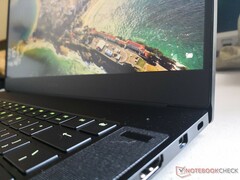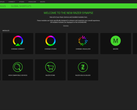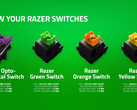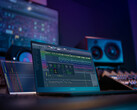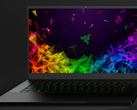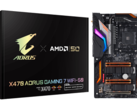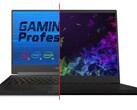Laptops with native 240 Hz panels made their debut at CES 2019 and the first models have finally begun shipping to consumers. After testing two independent 15.6-inch models in-house each with 240 Hz panels, we now have a better idea about how these initial super-high refresh rate panels can perform.
Firstly, we can now confirm that the Razer Blade 15 Advanced and Gigabyte Aero 15 Classic are each shipping with the same 240 Hz LQ156M1JW03 IPS panels from Sharp. We suspect that the 240 Hz panel for the upcoming 2019 HP Omen 15 will also be from Sharp as well. Characteristics like the fast response times, contrast ratio, and black levels are thus very similar between the Razer and Gigabyte as shown by our table below for a similar visual experience between the two systems. Interestingly, the Razer system is a bit better calibrated out-of-the-box while the Gigabyte is slightly more accurate only after calibration.
No matter which system you prefer, however, the 240 Hz experience is unworldly if you're coming from a standard 60 Hz panel. Everyday tasks like browsing, scrolling, and even word processing are so smooth that it feels jarring to the eyes when jumping between a 60 Hz and 240 Hz laptop. Nvidia G-Sync is not available on the new Blade 15 or Gigabyte 15 Classic, but the super-fast 240 Hz native refresh rate can already reduce screen tearing more effectively than a 60/120/144 Hz panel.
The downside to having a 240 Hz laptop is that most external monitors operate at much lower refresh rates of 60 Hz or 120 Hz. As a result, jumping between 240 Hz and 60 Hz displays in a multi-monitor setup can be potentially distracting depending on how sensitive your eyes are to the different refresh rates.
Catch our review on the Razer Blade 15 Advanced with gen 9 Core i7 and 240 Hz display panel coming soon. In the meantime, learn more about the Gigabyte Aero 15 Classic and its 240 Hz panel in our full review here.
| Razer Blade 15 RTX 2080 Max-Q Sharp LQ156M1JW03 (SHP14C5), IPS, 15.60, 1920x1080 | Gigabyte Aero 15 Classic-XA Sharp LQ156M1JW03 (SHP14C5), IGZO, 15.60, 1920x1080 | |
|---|---|---|
| Display | ||
| Display P3 Coverage | 66.9 | 65.3 |
| sRGB Coverage | 98.1 | 95.5 |
| AdobeRGB 1998 Coverage | 68.5 | 66.5 |
| Response Times | ||
| Response Time Grey 50% / Grey 80% * | 12.8 ? | 15.2 ? |
| Response Time Black / White * | 10.4 ? | 11.2 ? |
| PWM Frequency | 23810 ? | 23580 ? |
| Screen | ||
| Brightness middle | 293 | 266 |
| Brightness | 270 | 248 |
| Brightness Distribution | 87 | 89 |
| Black Level * | 0.29 | 0.31 |
| Contrast | 1010 | 858 |
| Colorchecker dE 2000 * | 1.69 | 2.78 |
| Colorchecker dE 2000 max. * | 3.37 | 5.96 |
| Colorchecker dE 2000 calibrated * | 1.24 | 0.91 |
| Greyscale dE 2000 * | 2.3 | 3.58 |
| Gamma | 2.3 96% | 2.46 89% |
| CCT | 6758 96% | 7186 90% |
| Color Space (Percent of AdobeRGB 1998) | 63 | 62 |
| Color Space (Percent of sRGB) | 98.5 | 96 |
| Total Average (Program / Settings) |
* ... smaller is better


 Deutsch
Deutsch English
English Español
Español Français
Français Italiano
Italiano Nederlands
Nederlands Polski
Polski Português
Português Русский
Русский Türkçe
Türkçe Svenska
Svenska Chinese
Chinese Magyar
Magyar